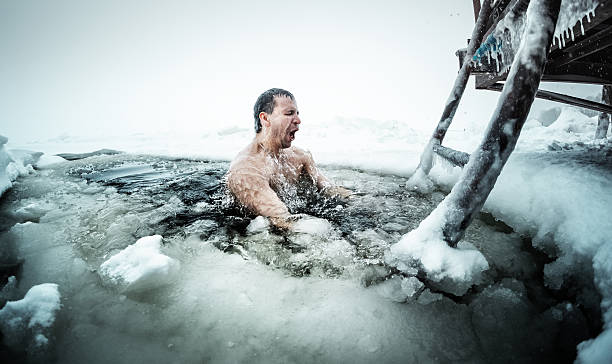(919) 561-2802

The New Trend of Ice Baths
Ice baths, also known as cold water immersion, have gained popularity in recent years among athletes and fitness enthusiasts as a way to promote recovery and reduce muscle soreness after intense workouts. In this article, we will explore the benefits and risks of ice baths, how they work, and how to safely use them.
What is an Ice Bath?
An ice bath involves immersing your body in cold water for a period of time, typically between 5 and 15 minutes. The water temperature is usually between 50 and 59 degrees Fahrenheit (10 to 15 degrees Celsius), which is colder than a typical cold shower or dip in a swimming pool.
The Benefits of Ice Baths
- Reduces inflammation and muscle soreness
One of the primary benefits of ice baths is that they can help to reduce inflammation and muscle soreness. The cold water causes blood vessels to constrict, which can help to reduce swelling and inflammation in muscles and joints. This can be particularly beneficial for athletes who engage in high-intensity exercise or endurance events.
- Improves Recovery Time
Ice baths can also improve recovery time after a workout. By reducing inflammation and muscle soreness, ice baths can help athletes to recover faster from intense exercise and resume training sooner.
- Enhances immune function
Cold water immersion can also enhance immune function. Exposure to cold temperatures can stimulate the production of white blood cells, which are essential for fighting off infections and other illnesses.
- Reduces stress and anxiety
Cold water immersion can also have a calming effect on the body and reduce stress and anxiety levels. The shock of the cold water can trigger the release of endorphins, which are natural mood-boosting chemicals in the brain.
The Risks of Ice Baths
While ice baths can provide numerous health benefits, they can also pose some risks, particularly for people with certain medical conditions. Some potential risks of ice baths include:
- Hypothermia
Prolonged exposure to cold water can lead to hypothermia, a condition in which the body's core temperature drops below normal levels. Symptoms of hypothermia include shivering, confusion, and drowsiness, and it can be life-threatening if not treated promptly.
- Skin Irritation
Sitting in cold water for prolonged periods can cause skin irritation, especially if you have sensitive skin. To avoid this, it is recommended to limit ice bath sessions to 10 to 15 minutes at a time and take breaks if you experience any discomfort.
- Increased Heart Rate
Exposure to cold water can cause the heart rate to increase, which can be dangerous for people with heart conditions. It is important to consult with a healthcare provider before using ice baths if you have any underlying medical conditions.
How to Safely Use an Ice Bath
Here are some tips for using an ice bath safely:
-
Gradually adjust to the temperature: Start with a warmer temperature and gradually decrease the water temperature over time.
-
Limit your time: Limit your time in the ice bath to 10 to 15 minutes at a time.
-
Monitor your body temperature: Take your temperature before and after the ice bath to ensure that it doesn't drop too low.
-
Stay hydrated: Drink plenty of fluids before and after the ice bath to avoid dehydration.
-
Seek medical advice: If you have any underlying medical conditions or concerns about using an ice bath, consult with a healthcare provider before starting.
Conclusion
Ice baths can provide numerous health benefits for athletes and fitness enthusiasts, including reducing inflammation and muscle soreness, improving recovery time, enhancing immune function, and reducing stress and anxiety levels. However, it is essential to use them safely and under the guidance of a healthcare provider, particularly if you have any underlying medical conditions.
